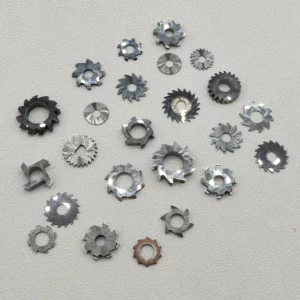Table of Contents
ToggleMetal Profiles Cut Carbide Saw Blades
In industries like manufacturing, construction, and metalworking, precision cutting tools are the lifeblood of productivity. One such tool, the metal profiles cut carbide saw blades, has gained attention for its effectiveness and efficiency in cutting various materials. Understanding how these saw blades operate and their applications can be crucial for businesses aiming to enhance their operations.
The Anatomy of Metal Profiles Cut Carbide Saw Blades
To appreciate how metal profiles cut carbide saw blades excel, it is essential to first understand their components. These blades typically feature a series of sharp, embedded carbide tips that provide strength and durability. The metal profiles—essentially the shapes of the materials being cut—play a significant role in guiding these blades to deliver smooth, clean cuts.
For instance, consider a construction company that frequently works with steel beams. If a standard saw blade is used, it may struggle or become dull quickly, resulting in inefficient cuts and wasted time. In contrast, a carbide-tipped saw blade designed specifically for cutting metal profiles will last longer and produce cleaner cuts. These blades reduce the likelihood of chipping and warping, ultimately providing a more refined end product.
Precision Cutting for Diverse Applications
Metal profiles cut carbide saw blades shine particularly bright in specific applications. The automotive and aerospace industries depend heavily on precise parts that must adhere to strict specifications. Whether cutting aluminum profiles for a car chassis or intricate metal components for aircraft, these blades ensure high-quality performance.
Take, for example, a company that manufactures aluminum frames for commercial vehicles. Using standard saws might lead to inaccuracies that result in poor fittings when assembling various vehicle parts. By employing metal profiles cut carbide saw blades, not only is precision achieved, but it also reduces the need for costly rework and improves overall efficiency.
Moreover, these blades are not just for heavy industries. They have found applications in furniture making as well. A carpenter cutting metal accents for a modern desk can benefit immensely from clean, precise cuts provided by carbide saw blades. The end result is not only aesthetically pleasing but also ensures that the furniture remains sturdy and durable for years to come.
Why Choose Metal Profiles Cut Carbide Saw Blades?
When purchasing cutting tools, customers often weigh several factors, including durability, precision, and overall cost-effectiveness. Metal profiles cut carbide saw blades score high on all these fronts.
1. Longevity: The robust nature of carbide ensures that these blades have an extended lifespan compared to traditional steel blades. For instance, a company that switches to carbide can anticipate a reduction in blade replacement costs, which accumulates significant savings over time.
2. Efficiency: The design and material of these blades allow for faster cutting speeds. Businesses can streamline their operations and increase production rates because they can cut through metal without frequent pauses for maintenance or blade changes.
3. Versatility: Metal profiles cut carbide saw blades can handle various materials, including stainless steel, aluminum, and even exotic alloys. This versatility gives companies the ability to use one blade for multiple projects, thus reducing inventory costs for cutting tools.
4. Quality Finish: As mentioned earlier, the smoothness of cuts made by these blades enhances product quality. In industries where aesthetics matter, such as furniture or display manufacturing, the finishing touches are crucial for customer satisfaction.
For example, a small workshop that produces custom metal art pieces may find that investing in these blades allows them to tackle more intricate designs without compromising quality. The craftsmen can produce a higher volume of detailed work, attracting more clients and thereby boosting revenue.
Investigating Performance Metrics
Beyond the obvious benefits, it is essential to evaluate performance metrics when using metal profiles cut carbide saw blades. For example, businesses should monitor the blade’s cutting speed and the quality of the finished product. Some manufacturers provide data on blade life expectancy and suggest optimal feed rates for different materials.
By keeping track of performance, businesses can make informed decisions about when to replace blades and how to adjust cutting parameters for different materials. This not only maximizes productivity but also enhances the quality of the produced items.
Final Thoughts
As industries pursue efficiency and precision, metal profiles cut carbide saw blades emerge as critical tools in achieving these goals. Their design and performance cater to a variety of sectors, from manufacturing to craftwork, making them indispensable for professionals who prioritize quality and effectiveness in their operations.
Understanding the advantages of these blades—such as longevity, efficiency, versatility, and quality of finish—can empower businesses to make the best purchasing decisions. Whether you are cutting steel for structural components or shaping metal for artistic projects, investing in metal profiles cut carbide saw blades can significantly enhance performance and productivity.
In conclusion, metal profiles cut carbide saw blades stand out as essential tools for anyone involved in cutting metal. The combination of precision, durability, and versatility ensures that they remain a wise investment for industries that require quality, efficiency, and reliability.
